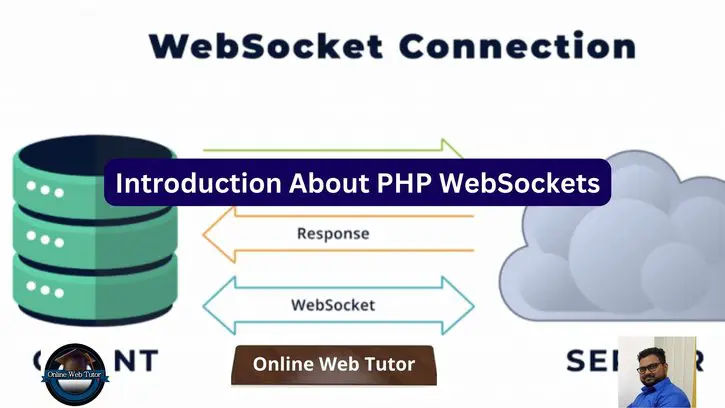WebSockets are a communication technology that allows full-duplex communication channels between a client (usually a web browser) and a server over a single TCP connection.
WebSockets offer real-time, bidirectional communication where both the client and server can communicate data to each other at any time, as opposed to typical HTTP requests, which are stateless and require the client to make a new request for each interaction.
Now let’s dive into the concept of PHP WebSockets in detail:
Introduction of PHP WebSockets
PHP WebSockets are WebSocket protocol implementations written in the PHP programming language. In PHP, WebSockets allow you to create persistent connections between the server and the client, allowing for real-time data transfer and communication.
To utilise PHP with WebSockets, you usually need to use a third-party library or framework that has WebSocket capability. Ratchet is a popular library that facilitates WebSocket server development in PHP.
Why we need WebSocket?
PHP WebSockets are useful for several reasons.
Here are some of the key reasons why you might need PHP WebSockets:
Real-time Communication: PHP Real-Time Communication WebSockets enable bidirectional, real-time communication between the client (often a web browser) and the server. In contrast to typical HTTP queries, which are stateless and necessitate the client initiating a new request for each interaction.
Efficient and Low-latency: PHP WebSockets are efficient and low-latency, allowing you to dramatically decrease the overhead associated with frequent HTTP queries. Instead of constantly polling the server for updates, the server can send data to the client as soon as it is available.
Event-driven Architecture: PHP Event-driven Architecture WebSockets frequently use an event-driven design, in which the server responds to WebSocket events such as client connections, disconnections, and incoming messages.
Scalability and Concurrency: PHP WebSockets can be designed to accommodate a large number of concurrent connections. WebSocket frameworks such as Ratchet and Swoole make use of non-blocking I/O and event-driven programming, allowing for efficient server resource utilisation and excellent scalability.
Overview of Working of PHP WebSockets
Here’s a step-by-step overview of how PHP WebSockets work:
Handshake: The WebSocket connection starts with a handshake, in which the client makes an HTTP request to the server requesting an upgrade to the WebSocket protocol. If the server supports WebSockets, it responds with a 101 status code, indicating that the handshake was successful.
Connection Establishment: If the handshake is successful, a persistent connection between the client and the server is created. This connection is kept open until either the client or the server decides to terminate it.

Data Exchange: With the WebSocket connection established, both the client and server can communicate data to each other without making explicit requests. The communication model is message-based, with each message being framed and sent asynchronously.
Server-Side Implementation: On the server, PHP can be used to manage incoming WebSocket connections, receive and process messages from clients, and deliver responses back to clients. The Ratchet framework, for example, provides a straightforward API for handling WebSocket events and maintaining client connections.
Client-Side Implementation: To establish a WebSocket connection with the server, you can use JavaScript or any WebSocket-supporting technology on the client side. Using the WebSocket API, the client can listen for incoming messages and send messages to the server.
PHP Real-Time Applications: WebSockets are especially beneficial for real-time applications that demand instant data updates, such as chat apps, collaborative tools, stock market tickers, or online gaming platforms. You may establish low-latency, bi-directional communication between the client and the server by using WebSockets.
If you liked this article, then please subscribe to our YouTube Channel for PHP & it’s framework, WordPress, Node Js video tutorials. You can also find us on Twitter and Facebook.
Read more